You would be hard-pressed finding a cuisine that isn’t available in the Big Apple. One of the most diverse and interesting aspects of the melting pot city is its array of international influences. But did you know that the New York City metropolitan area is home to the largest population of Jewish people outside of Israel. That makes it the perfect place to sample Jewish cuisine. Here are some of the essential Jewish foods to try in NYC and some classic delis, bakeries and cafes to indulge in them.
Jewish food in New York City
Jewish peoples have migrated to NYC from its earliest colonial history as New Amsterdam. Communities hail from Russia, Lithuania, Poland, Germany, Syria, Lebanon, Israel, Morocco, Uzbekistan… the list goes on, and they all bring their own flavours, dishes and cooking techniques to the table. The dominant group are Ashkenazi Jews who generally hail from Central and Eastern Europe.
In this melting pot, a new kind of Jewish food emerged that is somewhat unique to New York City and reflects the great diversity of its population. Here are just eight of the top Jewish foods in NYC to get you started. Enjoy exploring the history and culture of the Big Apple through your tastebuds. For more fun things to see, do and experience in NYC, see this collection of posts about New York City and State.
Knish
My first knish experience was a cold and wet day on the Lower East Side. It was love at first bite! The warming, carb-loaded, comfort food is exactly what you need on a dreary day in the city. The hot squares of dough are stuffed with onion and mashed potatoes and fried until golden.
Knishes were brought to New York by Jewish immigrants from Eastern Europe and sold from pushcarts in the early 20th century. Now there are knisheries known throughout the city, like the historic Yonah Shimmel’s Knish Bakery on the Lower East Side. Time has also seen new flavours developed – savoury and sweet. Get ’em while they’re hot!

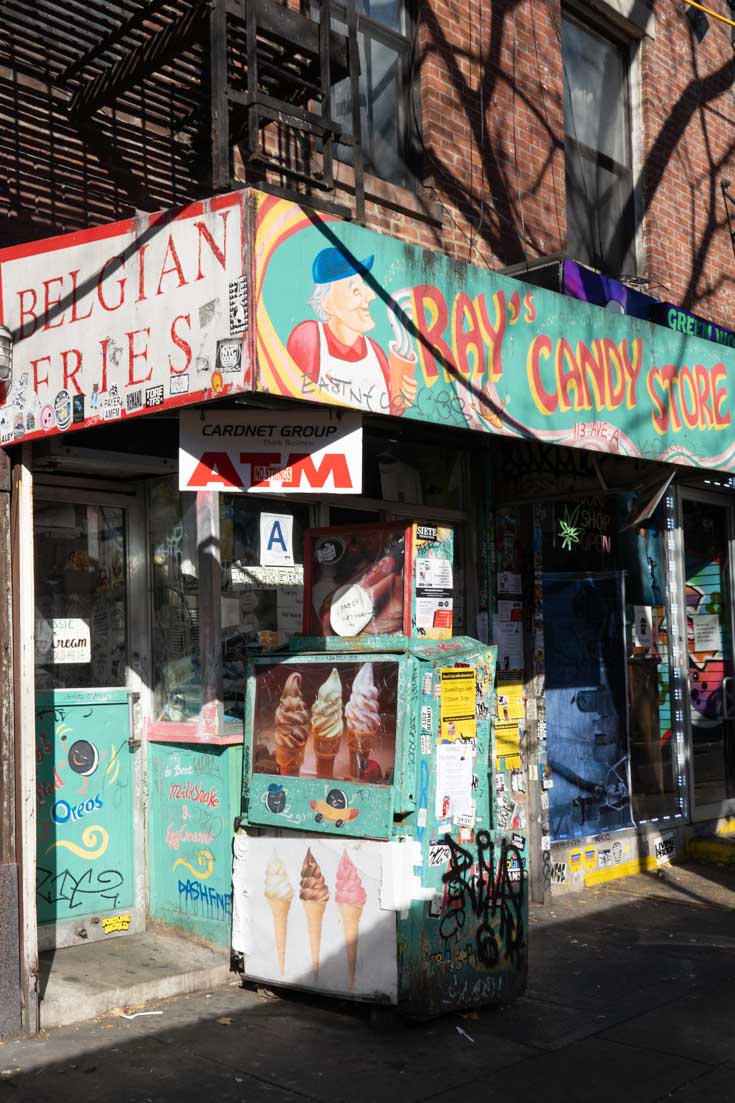


Halva
Halva is a crumbly, sesame-paste (tahini) based fudge. It is difficult to pinpoint the geographic origin of halva – the first known recipe to be documented in text dates back to the 13th century Kitab al-Tabikh (Book of Dishes). Further recipes appeared in Moorish Spain during the same century.
As Halva (also spelt halwa, halvah, halava, helva…) spread its wings and migrated across the Mediterranean and Central Asia, it was localised with regional ingredients including rosewater, pistachios, almonds, dates and coconut.
Today in New York you will find a plethora of flavours available including chocolate. While it isn’t strictly Jewish food, you would be hard-pressed finding a Jewish deli in NYC that doesn’t sell this yummy sweet. I love to eat it crumbled over creamy soft-serve ice cream from Seed + Mill at Chelsea Market. Eat it fresh and you’ll never buy the pre-packaged stuff again.
Bagels
Like the knish, bagels arrived in New York in the late 19th-century with Eastern European immigrants. New arrivals that could not find work, often turned to selling bagels from pushcarts on the Lower East Side of Manhattan.
Bagels are traditionally made with flour, salt, water, yeast and malt. The dough is boiled for a few seconds before it is baked. This leads to a tough, shiny, caramel-coloured crust. During the 1970s bagels finally made it out of their Jewish neighbourhoods into the mainstream. With that recipes were adapted to appeal to broader American tastes, in particular, the crusts became thinner and softer.
If you’re wondering about the “classic” bagel-cream cheese-lox combination, that was most certainly a Big Apple creation. At the turn of the 20th-century pushcart sellers pedalling lox, a brined and smoked salmon, moderated the saltiness of the fish by adding bread in the form of bagels and all-American cream cheese.
Ask any New Yorker where to get the best bagel and you’ll get various answers. Purists prefer them hand rolled (look for irregularly shaped, non-uniform bagels), kettle boiled and hearth baked. The cream of the crop include Zucker’s Bagels and Smoked Fish, Kossar’s Bagels & Bialys, Ess-a-Bagel, Absolute Bagels and historic, Russ & Daughters. For more bagel hotspots wherever you might be in NYC, consult this fun map.
Latkes
The latke is traditionally a potato cake fried in schmaltz (animal fat), commonly served with sour cream and applesauce. Sold! Right?! Latkes are strongly associated with the Jewish holiday, Hanukkah. However, in terms of Jewish history, they are a relatively recent addition to the cuisine.
That’s because potatoes are native to South America. Therefore, the current form of latkes are strictly post-Columbian and probably date back to the 1800s. With that said, pancakes made of other ingredients such as cheese, root vegetables and buckwheat have a much longer history in Jewish cuisine.
When potatoes took off in Europe, they were quickly adopted and became a staple. This was especially so in the east of the continent. Latkes then transferred to North America with Eastern European Jewish immigrants. For the best New York latkes try Barney Greengrass, Katz’s, Russ & Daughters Cafe, B&H Dairy and Sherry Herring.


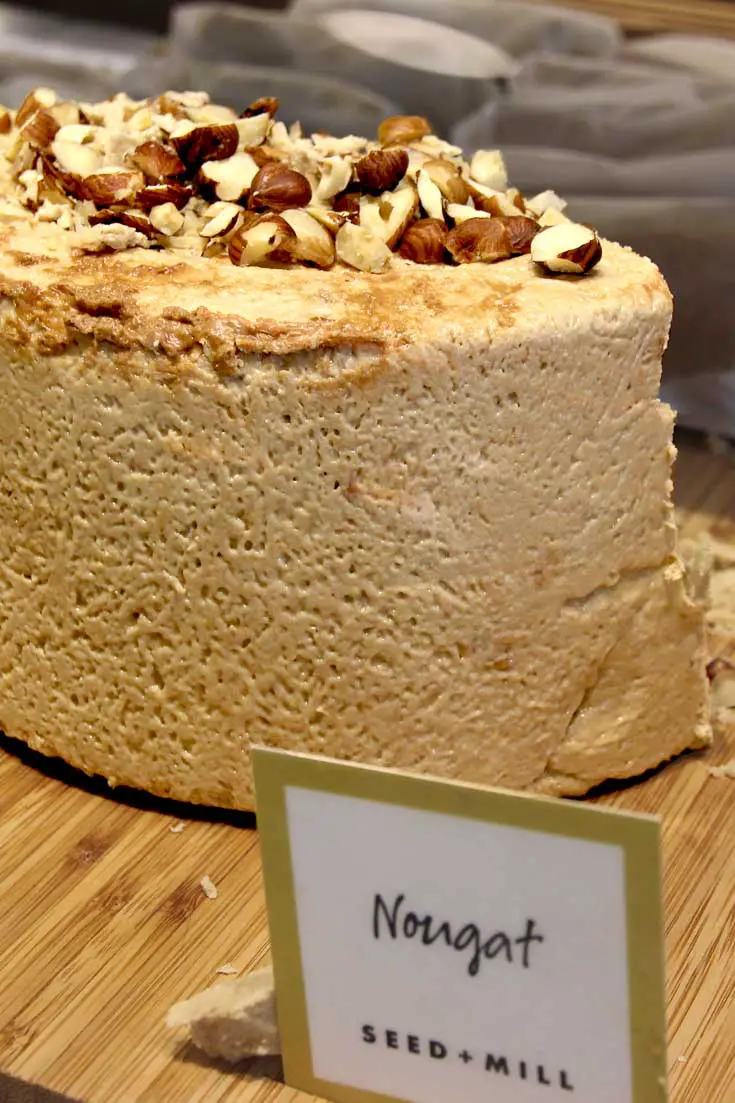
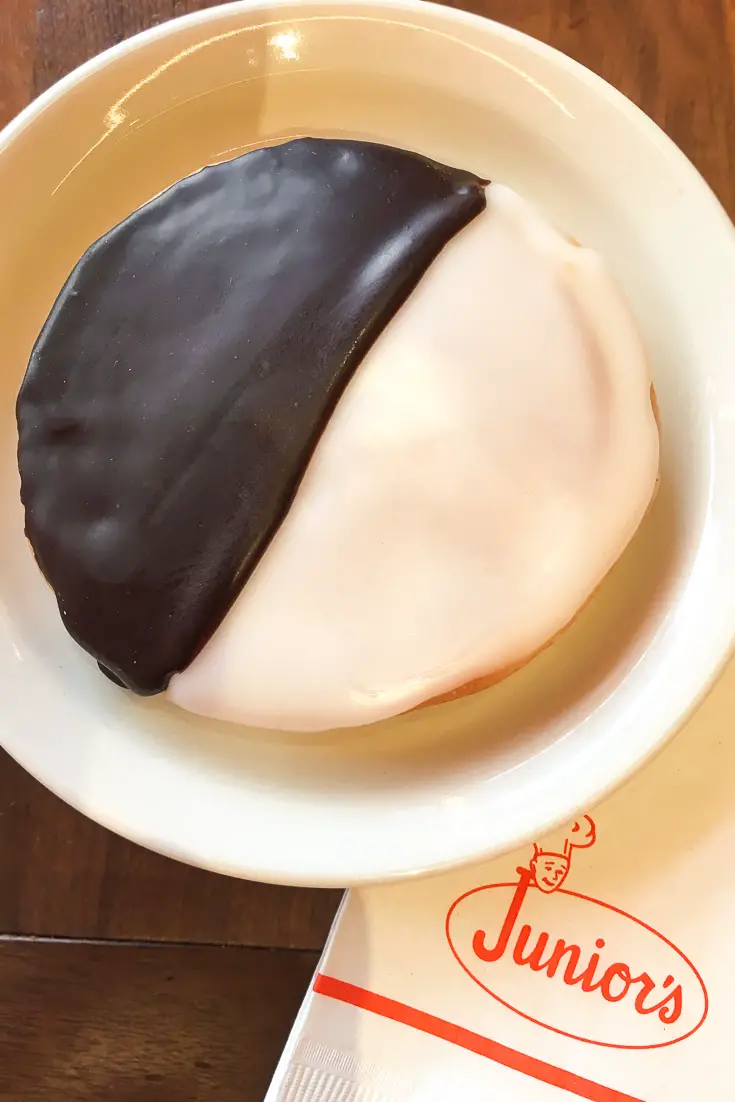
Black & white cookies
Taking a bite into my first black and white cookie, my initial thought was “this is not a cookie!” It was delicious, just unexpected. Little had I known that these sweet treats are actually a drop cake. They are made with a cake batter thickened with extra flour. They are most commonly finished with fondant: chocolate on one half and vanilla on the other.
The black and white-iced confection has a debated history–don’t they all? The top claimaint is Glaser’s Bake Shop which opened in 1902 and operated in Manhattan’s Yorkville neighbourhood up until 2018. There’s also some stiff competition from Hemstraught’s Bakery in Utica, NY with their half-moon cookies developed in 1920.
No matter who came up with the concept, these chocolate and vanilla desserts were fully embraced by the Jewish community. Look for local recommended black & whites at places like Junior’s, William Greenberg Desserts, Wu and Nussbaum, Russ & Daughters Deli and Zabar’s.
New York cheesecake
Cheesecake, as a concept, was invented by the Ancient Greeks and spread by the Romans. The cheesecake we think of as New York-style, was most likely created by Jewish-German immigrant to New York City, Arnold Reuben. The restaurateur is said to have perfected his beloved cream-cheese based recipe in 1929.
This cream cheese version is a distinctly American take on the ancient dessert owing to its main ingredient. Cream cheese was invented in the State of New York by a dairyman trying to replicate French Neufchatel cheese in 1872. Instead, he created something new!
You’ll find some of the finest cheesecake in New York today at Eileen’s Special Cheesecake, Junior’s, Breads Bakery, Pasticceria Rocco, Lady M Cake Boutique, Sarge’s Delicatessen & Diner, Ferrara Bakery & Cafe and Mah-Ze-Dahr Bakery.
Egg cream
We can trace the first egg cream-style beverage served up in New York to the 1880s. The sweet drink was composed of raw eggs mixed into carbonated water with chocolate syrup and cream. This produced a decadent, froth-crowned beverage that was also quite expensive.
The version we know today was probably the work of Louis Auster, who opened a candy shop on the Lower East Side in 1890. He is attributed with creating a more affordable version which omitted the egg and utilized milk in place of cream. He also created his own syrup recipe which he guarded fiercly from competitors and took to the grave.
With this new affordability, the egg cream’s popularity boomed and appeared on drugstore, soda fountain and candy store menus across NYC. Though its popularity waned with increasing availability of soft drinks like Coca-Cola, there are still a few nostalgic places you can order one up today. Russ & Daughters Cafe, Ray’s Candy Shop and Brooklyn Farmacy & Soda Fountain.
Pastrami sandwich
We couldn’t talk about Jewish food in New York without discussing pastrami, an evolution of Romanian pastirma in both ingredients and name. A large number of Romanian Jews arrived in New York City between 1881 and 1914–mostly settling in the Lower East Side. They opened delis that sold the typical kosher products plus specialty items from their homeland including pastirma made using goose. In the US, beef was more affordable and over time became the preferred meat.
Pastrami is made by wet-curing beef navel in brine. Next, it is rubbed with a seasoning made largely of black pepper and coriander, smoked for flavor, and steamed for ultimate tenderness. The pastrami is then sliced and often served piled mile-high on a sandwhich.
There are conflicting origin stories of the first pastrami sandwich–layers of thin-cut pastrami typically served on rye bread with spicy mustard. One of the frontrunners for pastrami sandwich creator, is the oldest Jewish deli in NYC that is still operating – Katz’s. This Lower East Side institution is the place to get your classic New York pastrami sandwich, and pick up an egg cream while you’re at it.

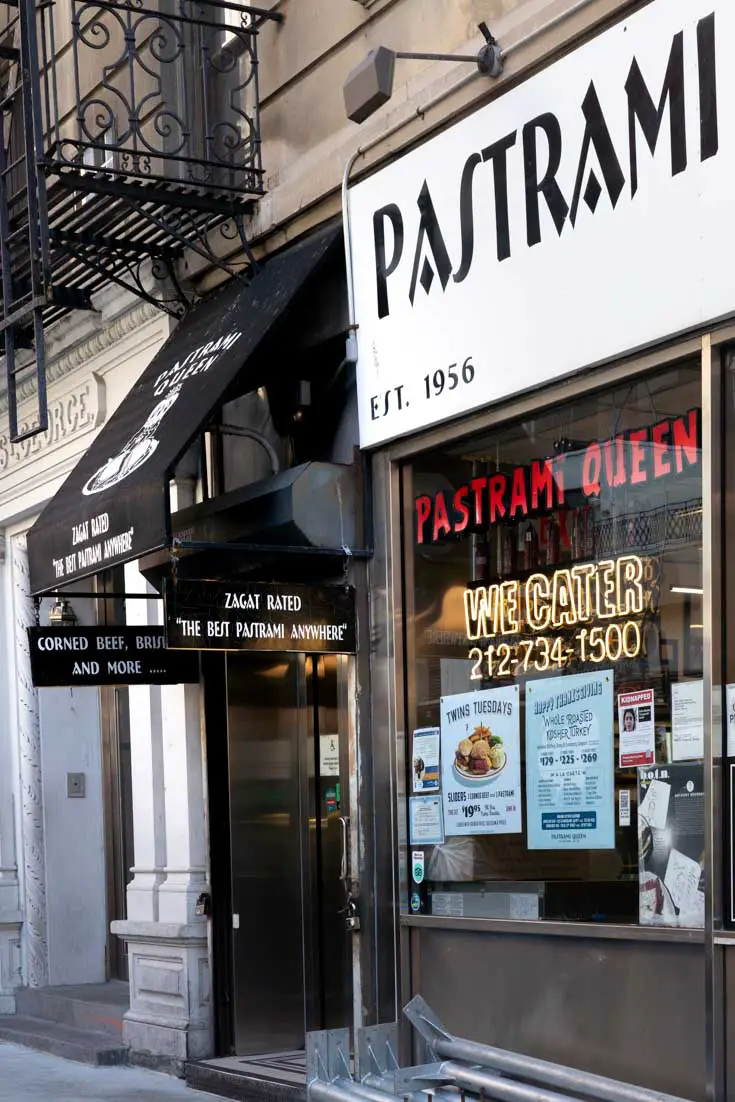
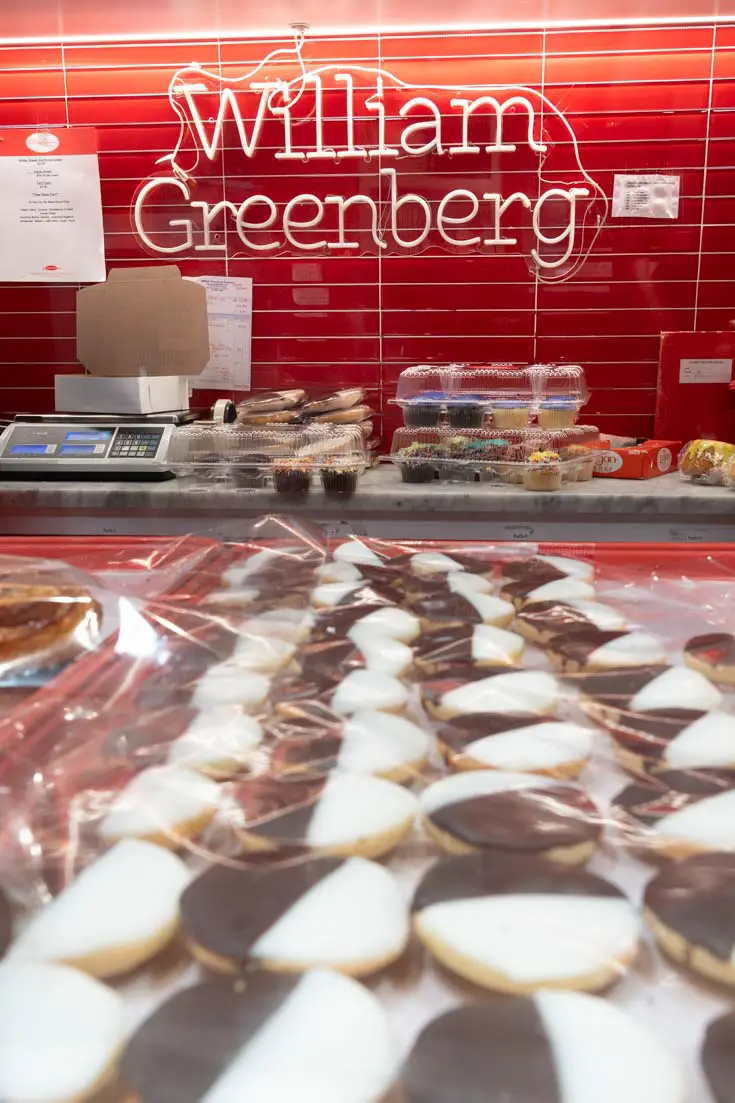
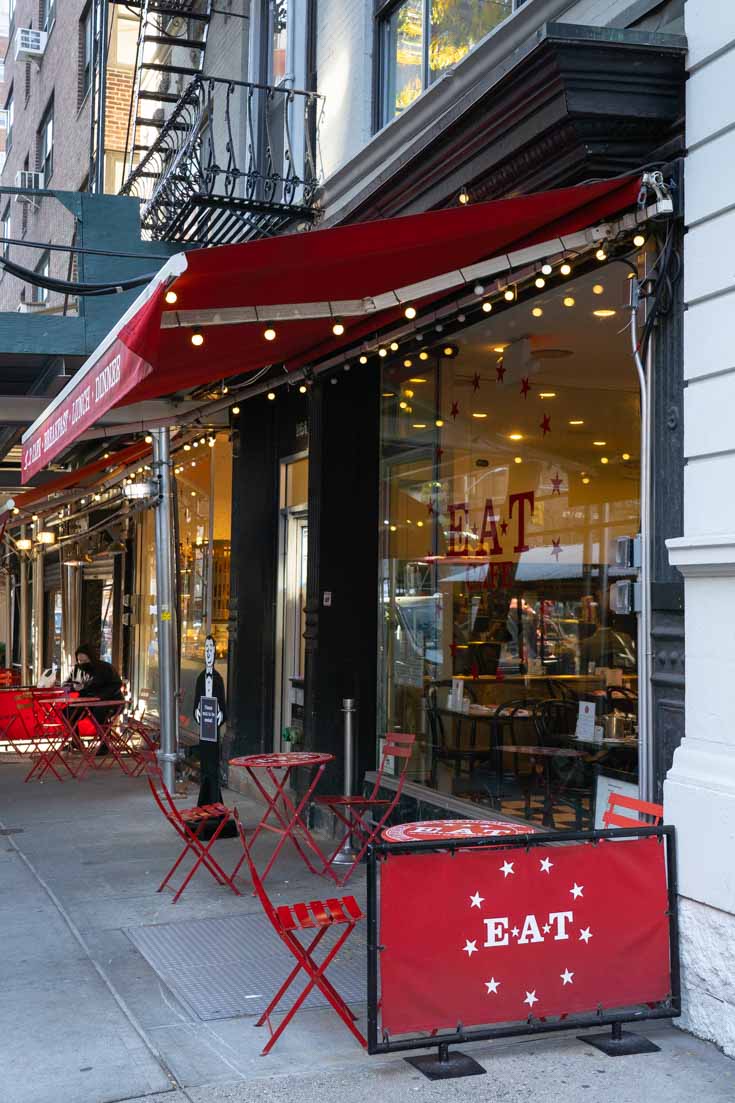
Places to eat Jewish food in NYC
Looking for places to eat Jewish food in NYC with heritage and heart? These are some of the oldest, most traditional and (arguably) the best:
- Russ & Daughters’ Deli (they also have an eat-in cafe) – http://www.russanddaughterscafe.com/
- Katz’s Delicatessen – https://www.katzsdelicatessen.com/
- Yonah Shimmel’s Knishery – http://www.knishery.com/
- Barney Greengrass – https://www.barneygreengrass.com/
- Zabar’s Cafe – https://www.zabars.com/home
Also try some of these newer, but no less beloved Jewish food institutions:
- E.A.T. – https://www.elizabar.com/eat-to-go.aspx
- 2nd Ave Deli – https://2ndavedeli.com/
- Pastrami Queen – https://www.pastramiqueen.com/
- Mr Broadway (recently merged with Ben’s Kosher Deli) – https://www.mrbroadwaykosher.com/
- Sarge’s Deli – https://sargesdeli.com/
- Zucker’s Bagels & Smoked Fish – https://www.zuckersbagels.com/
Tell us your favourite dish, or place to eat Jewish food in New York City in the comments below.
Peace, love & inspiring travel
Madam ZoZo
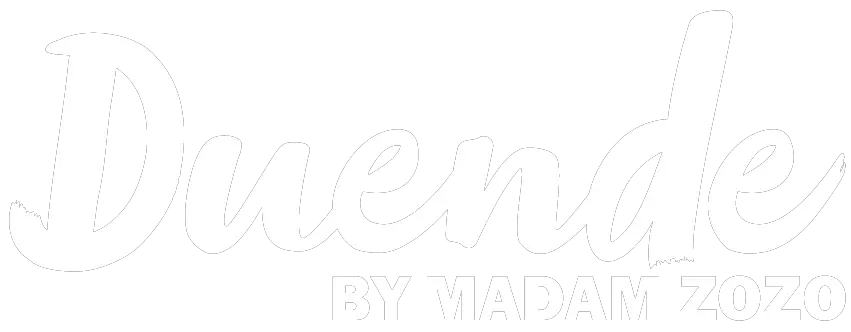
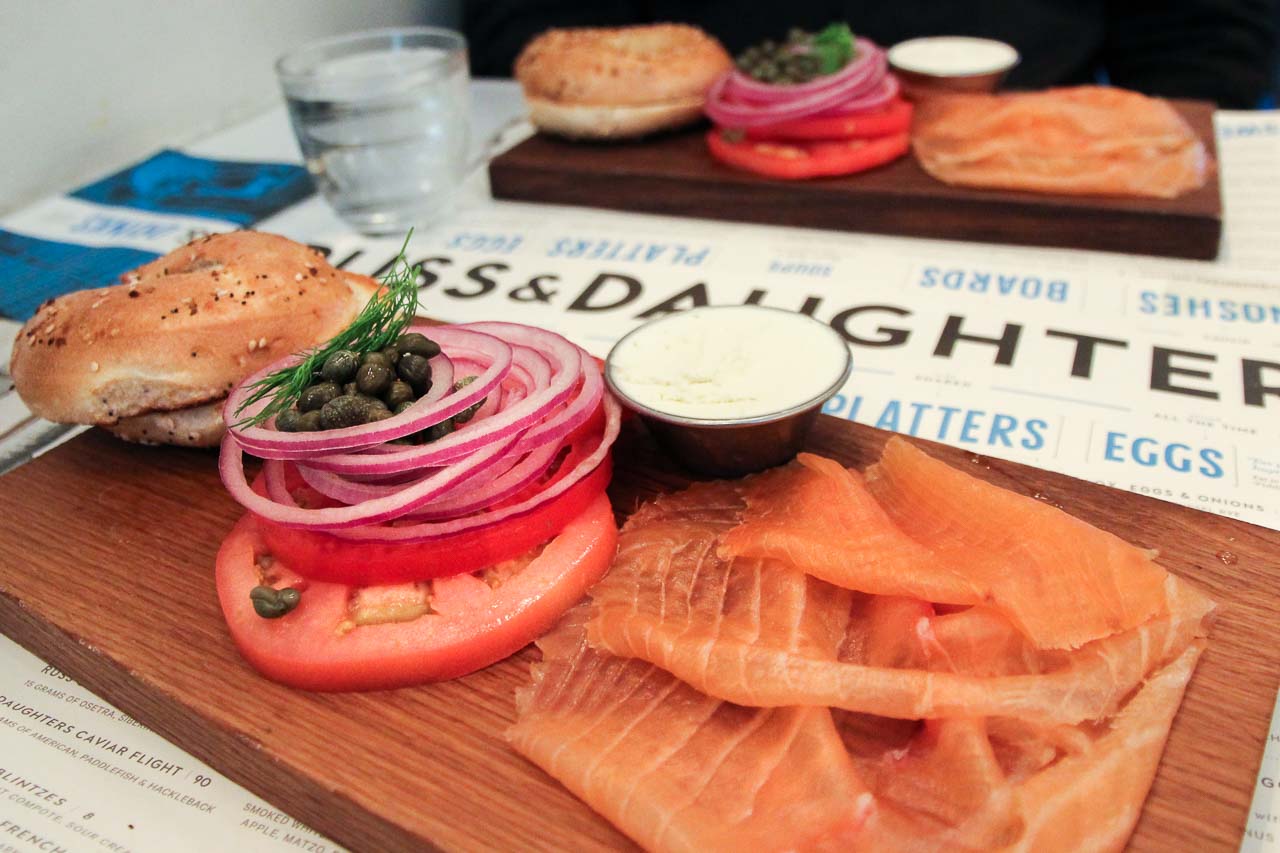
2 comments
There is also an extensive Halva offering at Economy Candy in the Lower East Side. It’s a small shop selling traditional candy, as well as candy from the past, and in the back you can find multiple different flavors of Halva. Sometimes they will give you samples for free as well!
That’s great to know! I think I passed by Economy Candy. Thanks Gina